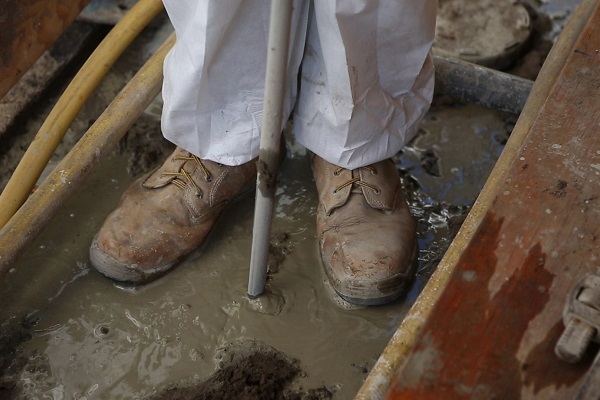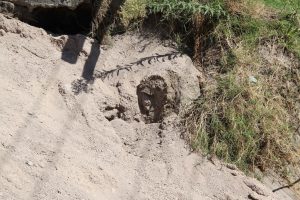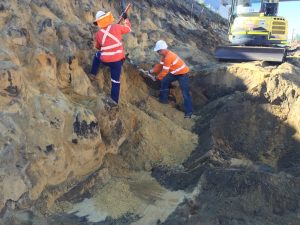Ground stabilisation solutions for building on coastal sandy soils

With almost 50,000kms of coastline and more than 10,000 beaches around Australia, it’s only natural that many Australians choose to live by the ocean. Yet, despite the lifestyle benefits of coastal living, construction methods near a shoreline typically need more careful consideration to account for the loose, sandy soil conditions prevalent in these areas.
Building on sandy and non-cohesive soils can present a number of challenges for builders, who must ensure that a structure’s foundations can adequately support the building load. In coastal regions, buildings can be impacted by soil subsidence, collapsing soils, low bearing capacity and erosion, which can lead to structural issues due to the soft, weak and unstable foundation ground.
Ground strengthening and soil remediation undertaken either during or after the building process can be achieved using permeation grouting, a low pressure grouting technique that is widely used to stabilise non-cohesive soils and combat soft ground settlement, sinkholes and rock fractures.
“Permeation grouting is commonly used on building sites to support excavation or for shoring up adjacent structures where unstable ground, such as sandy soils, can be a safety hazard. It is also helpful for situations where additional bearing capacity is required of the founding soil due to new load configurations of the existing building,” Mainmark Ground Engineering business development manager Laurie Andrews explains.
The solution works by creating a comparatively solidified mass that, when injected into weak non-cohesive soil, increases ground strength and fills the voids between the soil particles. The liquid-form permeation grout in either its microfine cementitious grout or chemical grout form also decrease the permeability of sandy and non-cohesive soils.
Microfine or ultrafine cementitious grouts, sodium silicate, colloidal silicate or other chemicals are injected at low flow and pressure rates into treatment areas, without changing or disturbing the position of the individual soil grains. The process is a quick, very non-intrusive and relatively cost-effective solution for agglomerating and solidifying sands and non-cohesive soils.
“The process has no impact on the environment and is ideal for projects that require excavation near an adjacent or existing structure or building that is set on non-cohesive, sandy ground. Similarly, for basement or swimming pool construction, permeation grouting’s capability to agglomerate and solidify non-cohesive sandy soils makes it an ideal solution by stopping the excavated face of the soils from collapsing and slipping into the excavation area,” Laurie says.

Permeation Grouting is suitable for both commercial and residential projects. For example, the Mainmark team recently worked with the owners of a two-storey residential property in Coogee, Sydney. The home had undergone a renovation with the addition of an upper level, however the building works had changed the magnitude of the loads to the footings and load path configuration. The home’s strip footings, which were built on loose sandy soil, were re-supported and strengthened using permeation grouting.
On a recent commercial project, Mainmark used permeation grouting to consolidate the ground beneath a residential complex in nearby Randwick. The complex was being redeveloped and required excavation works to a depth of 3.5m below ground to allow for the construction of a services lift. However, a geological report identified the presence of Quaternary sands, a medium to fine grain marine sand, which was present up to 10m below ground where the lift shaft excavation was to occur. As the excavation was undertaken close to the existing building structure and along the perimeter of the support building’s footings, Mainmark injected permeation grouting to the surrounding areas to stop the founding soils from collapsing and to support the building’s footings.
Working collaboratively with the geotechnical, civil and structural engineers is key to ensure the solution meets the required engineering specifications. Careful planning of the injection matrix is also critical to ensure the correct level of cohesion and application depth is achieved. A trial zone and follow up testing should be conducted prior to commencing each permeation grouting project to ensure the solution is correctly calculated and the necessary ground strengthening and load bearing capacity can be confirmed before completing the full scope of work.
For more information about innovative ground engineering solutions, or to discuss your project’s site specific requirements call Mainmark on 1800 623 312 or visit www.mainmark.com.
